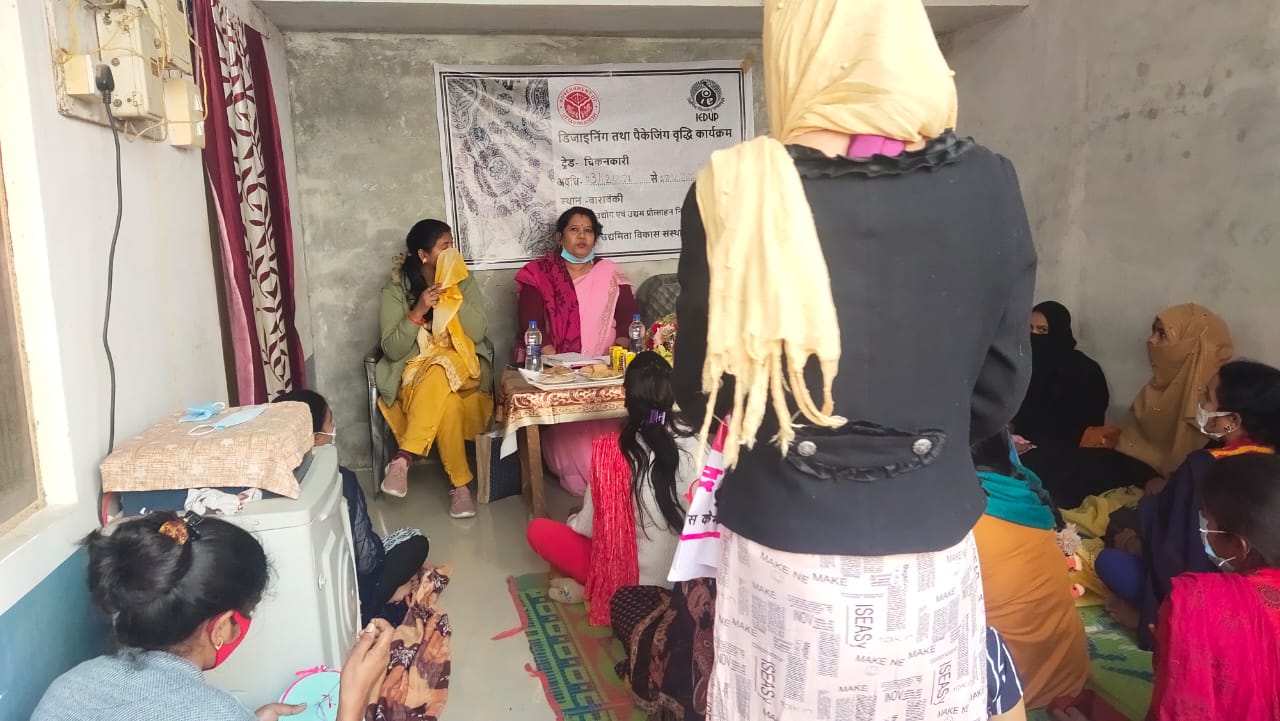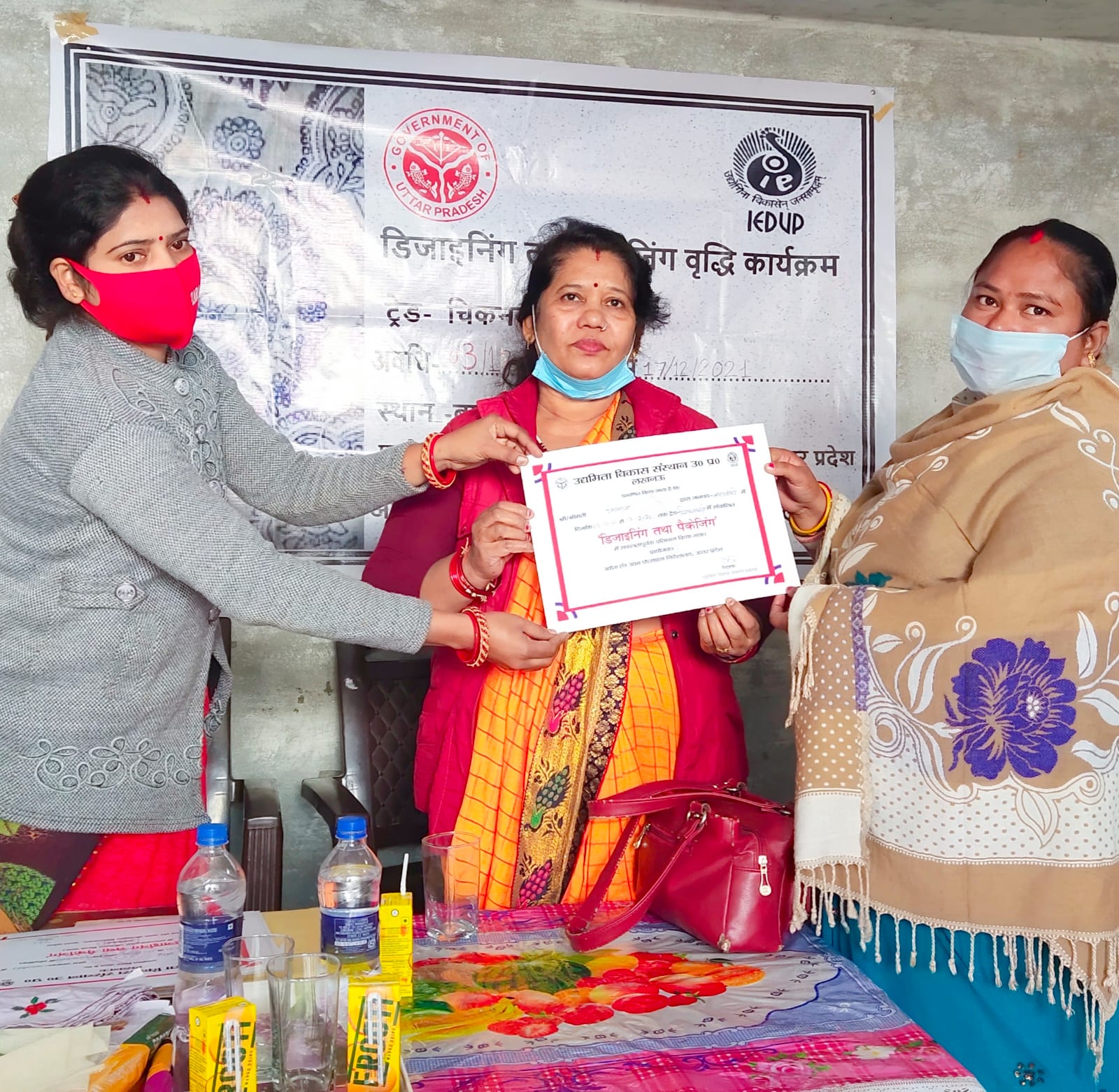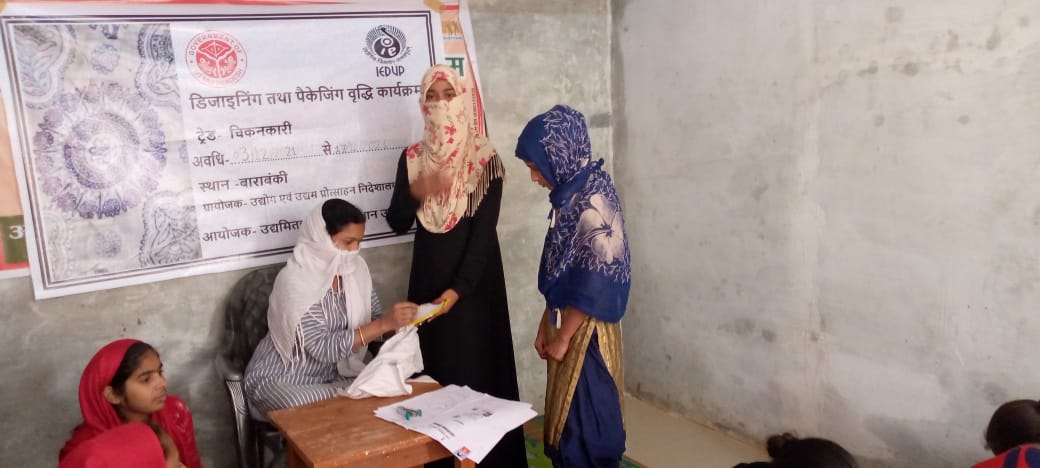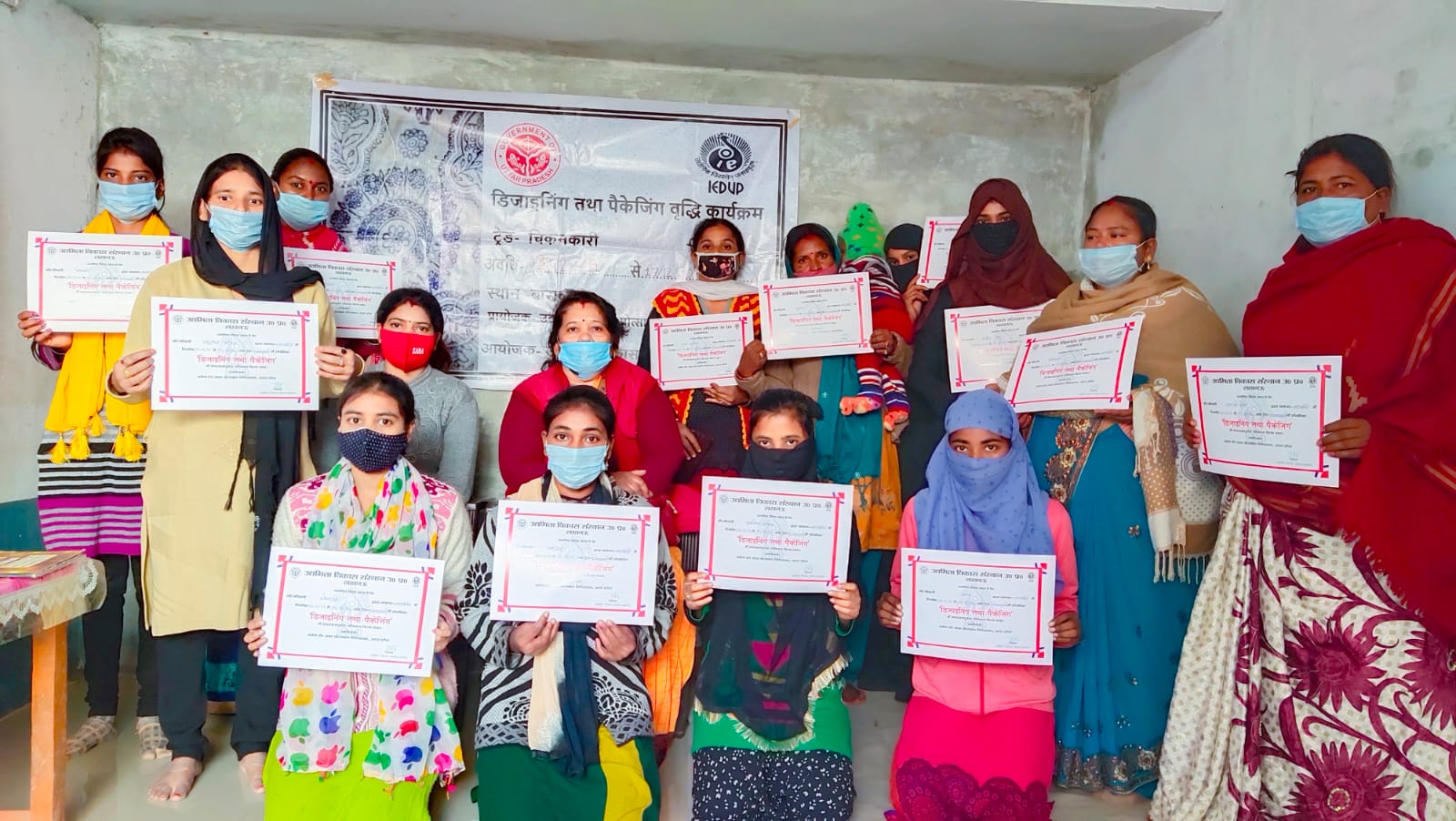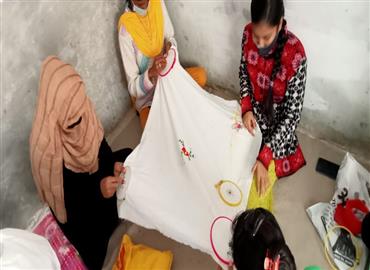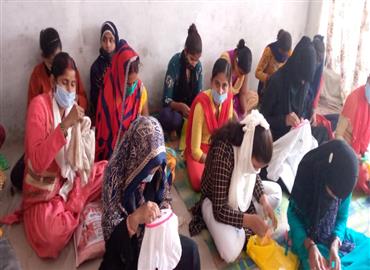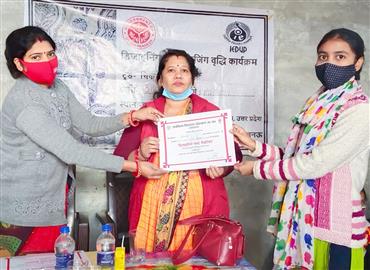Program:- Designing and Packaging,
District:- Barabanki, Trade:- Chikankari Work, Training period: 15 days
Place:- Barabanki (U.P.), Sponsor Directorate of Industry and Entrepreneurship
Promotion, Kanpur, Uttar Pradesh, Organizer
Udyamita Vikas Sansthan, Lucknow, Partner
Organization Pahal The Beginning Lucknow, Uttar
Pradesh,
Chikankari is a traditional Indian embroidery style that
originated in the 17th century. The craft is known for its delicate motifs and intricate artistry. Chikankari embroidery, a traditional
Indian style known for its intricate artistry and delicate motifs, has gained
global attention for its beauty. Rooted in centuries-old heritage, Chikankari embroidery holds deep
cultural significance in India. Over time, Chikankari embroidery incorporated different materials
and techniques. The use of
coloured threads and fabrics became more popular and new stitches and designs
were introduced. Regional
styles of Chikankari embroidery emerged, and each region developed its own
unique style and character. Chikankari
embroidery came to life again during the 19th century, when it caught the
attention of the British colonial rulers in India. The British were fascinated by the intricate and delicate designs
of Chikankari embroidery and started incorporating it into their clothing. This resulted in the global spread of
Chikankari embroidery, establishing it as a distinctive and highly prized
Indian handicraft. Chikankari embroidery is a living testimony to the rich
diversity and creative spirit of Indian art and culture. It is more than just a traditional
craft, it is a living art form that constantly adapts to changing times and
styles. The enduring legacy
of Chikankari embroidery reflects the indomitable strength of Indian
handicrafts and textiles, a source of inspiration for generations of artisans
and designers.
Chikankari embroidery is an important part of India’s rich
cultural heritage. However,
like many traditional crafts, it is at risk of extinction due to modernisation
and changing trends. Chikankari
embroidery, with its intricate beauty and timeless elegance, has evolved
gracefully over the centuries, accommodating contemporary trends and tastes. It has become an integral part of modern
fashion, as designers and brands seamlessly blend Chikankari embroidery into
their creations. Yet, beyond
being a mere fashion trend, Chikankari embroidery represents a cultural
heritage that demands preservation and promotion. The enduring legacy of Chikankari embroidery celebrates the
artistic talent, craftsmanship and unwavering commitment of generations of
artisans. It remains an
inseparable part of Indian handicrafts and textiles, leaving an indelible mark
in the field of fashion and design. As we move forward, it becomes important to actively support the
preservation and promotion of Chikankari embroidery and other traditional craft
techniques. By doing so, we
ensure that these cherished crafts continue to flourish while igniting the
imagination of future artisans and designers.
Objective of the Programme:- The
aim of the workshop is to experiment and develop new products as per the needs
and preferences of the contemporary market by utilizing the traditional skills
of the artisans and introducing new techniques and technologies for improved
production. The artisans of
handicrafts should be able to experiment boldly in design. For this purpose it
is necessary to provide a framework and process which gives the necessary
freedom to the designer.
Another main purpose of using packaging
is to exaggerate the product. A marketer needs to grab the attention of a viewer to buy the
product. Packaging should be
able to beautify a product to add to its visual appeal. The purpose of product packaging is to
protect the product from damage. Product packaging not only protects the product during transit
from the manufacturer to the retailer, but it also prevents damage. With each passing day the packaging
material is becoming less and less. Apart from the traditional paper-plastic, glass, metal packaging,
people have started to explore the use of new raw materials
It can instantly attract the attention of
the audience towards a product. You can create interest in the customer's mind towards a product
through attractively designed packaging.
Importance of Designing/Packaging: The role of packaging has become very
important as it helps to grab the attention of the audience. Packaging can be
used by marketers to encourage potential buyers to purchase a product.Packaging
is also used for convenience and information dissemination on how to use,
transport, recycle or dispose of the package or product.
Features of Designing/Packaging It is the
process of enclosing and covering a product or object. It is a group of general activities of
product planning. Packaging is related to the designing and making of wrappers
for a product. It is an art and science.v It is a new practice and unique promotional
technique. It is a means of safe delivery of the product to the customers or
consumers.
It is necessary to provide training on packaging of handicrafts to artisans and exporters to upgrade the present packaging of their handicraft products and to do better business in India and abroad. This will help in improving their sales and livelihood along with the benefits of related fields.

